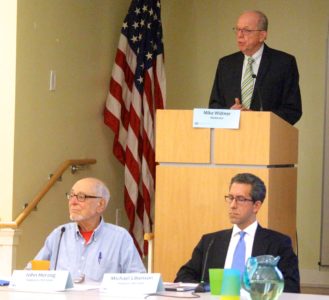Photo:
[Editor’s note: The article below is a letter to the editor in the Boston Sunday Globe, Sept. 18]
DANTE RAMOS missed the point of Belmont’s opposition to the Minuteman High School referendum (“Oh, Belmont! Local control fetish hurts vocational schools,” Opinion, Sept. 11).
The Minuteman district is broken. A substantial percentage of the approximately 600 students come from nonmember towns.
The funding mechanism severely disadvantages member towns. Belmont has tried for years to fix the problem, as recently as this summer. But nonmember towns are not joining.
In 2017, Belmont will pay $30,602 per student, as compared with $19,702 by nonmember towns, and it will only get worse with the new, $144 million Minuteman debt. This is an unfair financial burden on member towns.
Ramos praises Dover for its willingness to overlook the unfairness. But let’s put that in context. Belmont spent $13,029 in 2015 per pupil in our public schools, as compared with $24,263 in Dover. Additionally, Dover sent only two students to Minuteman; Belmont sends an average of 30. The disadvantage of Minuteman membership does not significantly affect Dover; that is not true of Belmont.
Belmont has legitimate concerns. Without fixing the unfairness of the district, we should not approve an oversized school that will make it worse.
Mark Paolillo
Chairman, Board of Selectmen
Belmont

